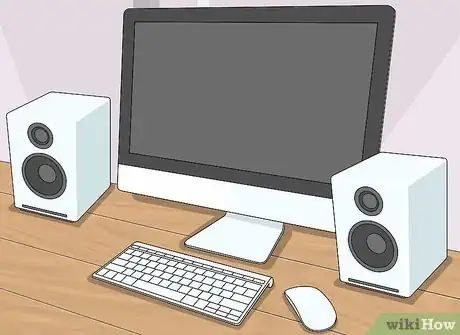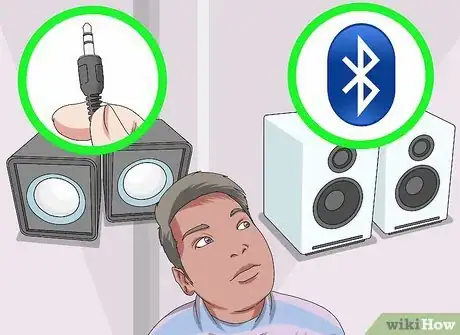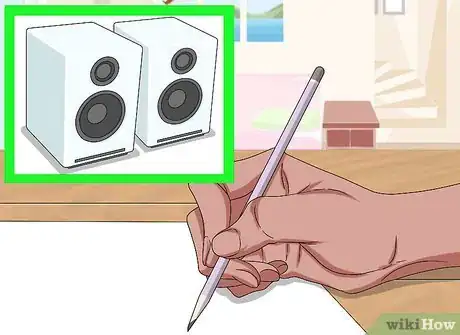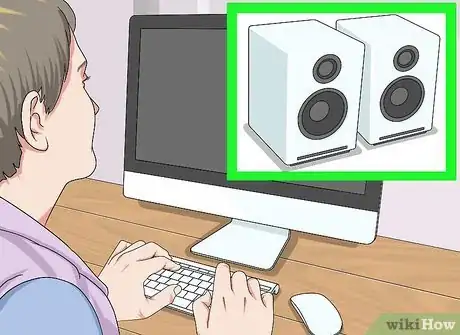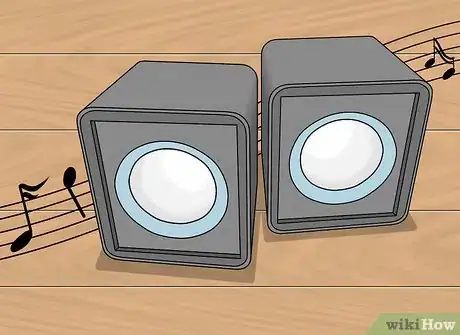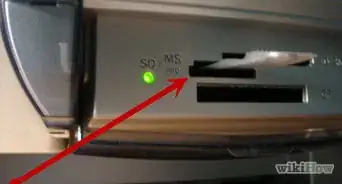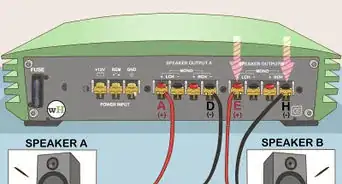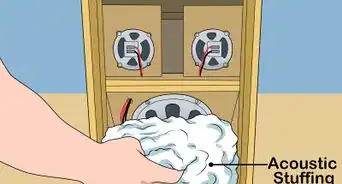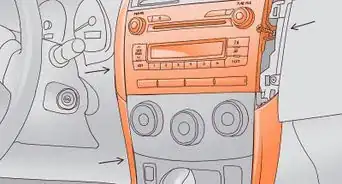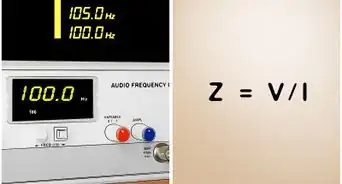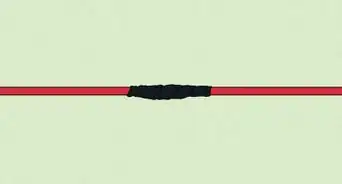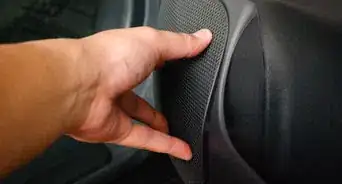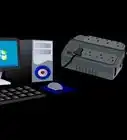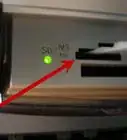This article was co-authored by wikiHow Staff. Our trained team of editors and researchers validate articles for accuracy and comprehensiveness. wikiHow's Content Management Team carefully monitors the work from our editorial staff to ensure that each article is backed by trusted research and meets our high quality standards.
There are 15 references cited in this article, which can be found at the bottom of the page.
This article has been viewed 224,852 times.
Learn more...
Speakers represent a wide variety of sound-producing electronics. They range from old-fashioned bookshelf speakers to surround sound systems that carry a heavy price tag. Shopping for the right speakers can feel overwhelming. With preparation and testing, though, you can find reasonably-priced speakers that enhance your enjoyment of music, movies, television, and video games.
Steps
Determining the Right Speakers
-
1Decide how you’ll use the speakers. The variety of speaker builds suits individual speakers for different tasks. For casual music listening, a pair of bookshelf speakers would be more than enough. Those who desire a more intensive experience can upgrade to standing speakers. Surround sound systems are also a high-end option.[1]
- Subwoofers are additional speakers that add depth to bass, which is low tone. They’re good for movies and music with lower range such as rock and metal.[2]
- For adding general depth to TV and movies, a soundbar or soundbase is an option. These take up less space, require less wiring, and can be combined with a subwoofer.
- Wireless and wall-mounted speakers benefit from portability and offer new sound angles in your room.
- For gaming, small specialized speakers usually offer enough sound. These are placed on a desktop near the computer and have magnetic shielding.[3]
-
2Consider your room’s furnishings. Different surfaces affect sound quality. Hard, flat surfaces reflect sound and soft or varying surfaces absorb sound. Sound is also easier to hear in a small room. To get a sense of the room, stand in the center and clap. The less the sound carries, the more powerful the speakers you’ll need.[4]
- A small room such as a bedroom is fine with bookshelf speakers, but a large carpeted and furnished room benefits from bigger speakers.
Advertisement -
3Determine the space you have available. While bookshelf speakers will fit in a small bedroom, you wouldn’t want to try to fit wide standing speakers in there. The sound can overwhelm a small room even if it has lots of absorbent furnishings. On the other hand, if you want a surround sound system for your television, the speakers need space away from the wall and surround you.
- Where you’ll put the speakers matters. Speakers inside a cabinet, for instance, can get muffled, but so do speakers in room corners since the sound is distorted by the walls.
- Speakers benefit from being three to four feet away from the sound source. This helps them project sound into the room.
- Try to keep your speakers around ear-level. At that level, the sound will be clearest to you.[5]
-
4Consider your budget. It’s very easy to fall into a price tag trap. You’ll see bigger and better-looking speakers or a salesperson will refer you to them even though quality isn’t completely related to price. A cheaper speaker may work better for you than a more expensive one. Stick to your budget as much as possible.
- Once you’ve decided on the type of speaker you need, go online or shop around in stores to compare prices. Determine how much you’re willing to pay for the kind of speaker that seems right for you.
Confirming the Specifics
-
1Find what kind of wiring you need. If you intend on hooking the speakers to an old stereo system or receiver, you’ll use speaker wire. On the other hand, modern speakers and devices use improved cables or even operate in your home on Bluetooth or Wi-Fi.[6]
- Speaker wire utilizes two wires that contain a positive or negative charge and end in various connectors. Some connectors plug into other devices while other connectors have to be clipped onto stereos.[7]
-
2Write down your amplifier’s power. Traditional speakers don’t have amplifiers, especially small bookshelf speakers. If you have an amplifier, find the model number. Search online for your amplifier and note its power and resistance numbers. These numbers will be in labeled in watts and ohms.[8]
- Always match speakers with amps to avoid damaging your electronics. The boxes of the speakers will have similar numbers to the amp or indicate they are compatible with your amp’s ohm and watt numbers.
-
3Find the speaker’s impedance number. Impedance, measured in ohms, signifies how much the speakers resist the power sent by the amplifier. Search the box or instruction manual for the power numbers. Compare this to your amplifier, if you have one. Choose speakers that indicate they match your amplifier’s ohm level or are compatible with it.[9]
- Most amplifiers are compatible with eight ohms. If you already know similar speakers work with your amp, you’ll be safe using these.
- Lower impedance speakers require more powerful amps. If the speaker impedance is too low, the amp can overheat.
-
4Check the speaker’s power handling. Power handling is measured in watts. The larger the amount of watts the speaker can handle, the greater the sound signal. This too should be matched to your amplifier, if you have one. Higher watt speakers often require more powerful amplifiers.[10]
- If your amplifier sends out more watts than your speaker uses, you can damage the speaker.
-
5Consider speaker sensitivity. The sensitivity is measured in decibels (dB). This indicates how loud the speaker’s sound can be. The higher the sensitivity, the more volume it can deliver in a watt of electricity. 80-88 dB is considered low and 100 dB high.[11]
- A higher sensitivity usually means a more expensive speaker or one that sacrifices quality in other areas that affect sound, such as the speaker cone.[12]
Testing the Speakers
-
1Knock on the frame. Once you’ve found speakers, don’t buy them blind if you can help it. First rap your knuckles against the speakers. The speaker should feel solid and give you back a solid sound. If it sounds hollow now, it’ll sound hollow when you try using it to play your entertainment at home.[13]
- If you’re buying speakers online, you can search for reviews or tests of the speakers, but to some degree you’re shopping blind.
-
2Turn on the speakers. Check that all the plugs work, then listen to the sound. Stand close enough, about ear-level to the front of the speakers. Judge if the internal components give you the sound you desire. The tightness of the covering over the speaker as well as the material of the speaker cone change the sound. Listen for any distortion, fuzziness, or crackling.[14]
- If the outer enclosure is wide or loose, the sound reverberates too much inside the speaker. If the enclosure is too tight, the speaker rattles and the sound distorts.[15]
- Cones are made of varying materials such as aluminum and polypropylene and push out air to make sound. Turn the settings up to volumes and frequencies you’ll use at home in order to judge the speaker’s sound range.
-
3Play your music. If possible, give the sound quality a personal test. Good test songs are ones you know well that you have available on a CD or other format where the song’s quality hasn’t been compromised. Queue up the tracks. Listen for sound quality as well as the problems, such as if the vocals and instruments sound off.
- Test different features by using a variety of songs, such as ones that include a strong bass, quiet vocals, or instruments.
- Quality speakers may help you experience parts of the songs you’ve never heard, including small details like fingers sliding on strings or covered-up instruments.
- You may be able to use a music device such as an iPod, but transferring the song file to the iPod lessens the quality and doesn’t give you the most accurate speaker test.
-
4Listen at home. A home test puts the speakers in the environment you want. Set the speakers up where you intend on having them. Play your music, movies, TV shows, or whatever else you intend on listening to with them. This is a good time to play your music too if you didn’t do it before.
- Relax. Even if the speaker seems impressive at first, stay attentive. Is this one you can listen to for a while, or does the sound quality make you want to turn it off?
- Test it with your amplifier if you can. Speakers and amplifiers all have their own sound characteristics. The best combinations usually come from complementary qualities. For example, a mellow sound balances a bright sound.
- Remember that sound quality is personal and objective. Your needs influence what speaker is right for you, so don’t let any salesperson pressure you into a decision.
-
5Return bad speakers. Before you buy the speakers, make sure the store has a friendly return policy. This is even more important if you’re shopping online, since you don’t get a chance to test the speakers in person and have to wait through shipping. Many companies will let you return the product for full price two weeks to a month after the purchase date.
- Keep your receipt and original boxing on hand until you’re sure that you’re keeping the speakers.
- Always keep and refer to the warranty information. The warranty gives you the right to quality assurance and a refund for a faulty product.
- Most companies accept returns for manufacturing flaws and dissatisfaction, not damage related from installation, use, or wear and tear.
Warnings
- Match your speakers to your amplifier. Speakers that have less impedance can get damaged. Amplifiers that don’t give enough power will cause poor sound quality.⧼thumbs_response⧽
Things You'll Need
- Amplifier, if your speakers don’t include one
- A CD or other music source
References
- ↑ http://www.digitaltrends.com/home-theater/how-to-buy-speakers-a-beginners-guide-to-home-audio/2/
- ↑ http://www.abt.com/learn/speaker-buying-guide
- ↑ http://www.bestbuy.com/site/buying-guides/speaker-buying-guide/pcmcat313900050012.c?id=pcmcat313900050012
- ↑ https://www.lifewire.com/stereo-speaker-buying-guide-3134673
- ↑ https://www.cnet.com/how-to/things-to-think-about-when-buying-speakers/
- ↑ https://www.bhphotovideo.com/explora/home-entertainment/buying-guide/how-buy-speakers-your-home
- ↑ https://www.crutchfield.com/S-5PShnrsaUNQ/learn/learningcenter/home/connections_glossary.html
- ↑ http://www.digitaltrends.com/home-theater/how-to-buy-speakers-a-beginners-guide-to-home-audio/3/
- ↑ http://www.prestonelectronics.com/audio/Impedance.htm
- ↑ https://spinditty.com/instruments-gear/Speaker-Watt
- ↑ http://www.audioholics.com/loudspeaker-design/loudspeaker-sensitivity
- ↑ https://www.lifewire.com/speaker-sensitivity-3134850
- ↑ https://www.crutchfield.com/S-ohUny6UEmUH/learn/speakers/stereo-choose.html
- ↑ https://www.cnet.com/news/before-you-buy-an-old-amplifier-receiver-speaker-or-turntable-read-this/
- ↑ http://www.techhive.com/article/2000385/what-makes-one-speaker-better-than-another.html


